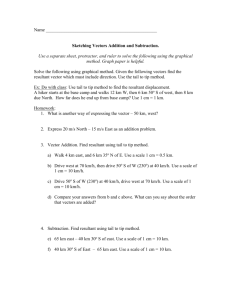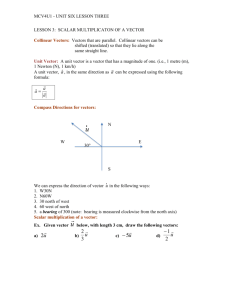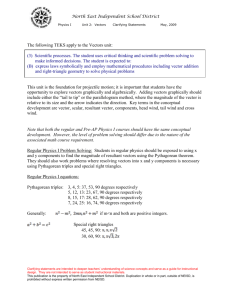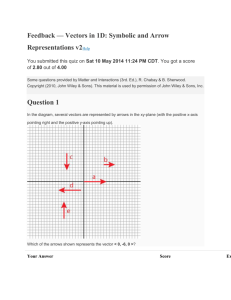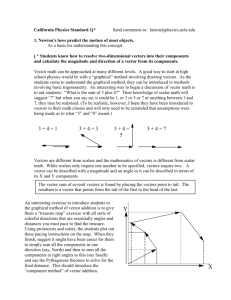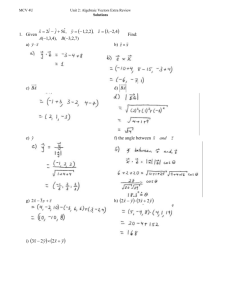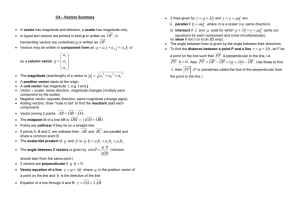Vector Theory Notes
advertisement
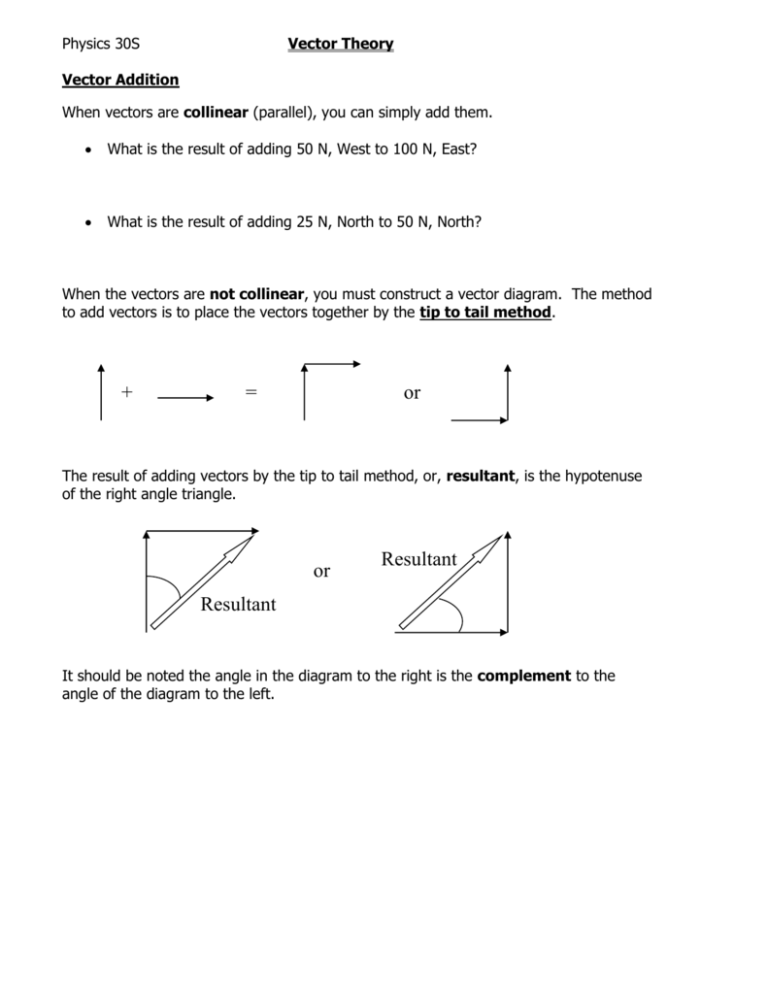
Physics 30S Vector Theory Vector Addition When vectors are collinear (parallel), you can simply add them. What is the result of adding 50 N, West to 100 N, East? What is the result of adding 25 N, North to 50 N, North? When the vectors are not collinear, you must construct a vector diagram. The method to add vectors is to place the vectors together by the tip to tail method. + = or The result of adding vectors by the tip to tail method, or, resultant, is the hypotenuse of the right angle triangle. or Resultant Resultant It should be noted the angle in the diagram to the right is the complement to the angle of the diagram to the left. Vector components are very important in physics and have two basic features that are apparent in the diagram below. One is that the components add together to equal the original vector: F Fx FY x y The other feature of vector components that is apparent in the diagram is that x and y are not just any two vectors that add together to give the original vector F : they are perpendicular vectors!! This perpendicularity is a valuable characteristic that enables you to use the Pythagorean Theorem and Trigonometry. F y x Example A force vector F has a magnitude of F = 175 N and points at an angle of 50o N of E. Determine the x and y components of this vector. ( x :112 N, East; y :134 N, North) Example #2 A cannon ball is launch such that the vertical component of the force is 5 N [North] and the horizontal component is 10 N, [East]. At what force was the ball thrown? (11.2 N, 63.4o E of N OR 11.2 N, 25.6o N of E)




